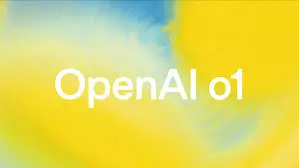OpenAI Day 2: Reinforcement Fine-Tuning and Model Customization: The Future of AI
Description
Explore OpenAI’s latest “Reinforcement Fine-Tuning (RFT)” technology, learn how to optimize AI’s reasoning capabilities through model customization, and apply it to professional fields such as law, medicine, and finance. Understand its profound impact on genetic disease research.
Table of Contents
- Introduction
- What is Reinforcement Fine-Tuning (RFT)?
- Differences Between Supervised Fine-Tuning and Reinforcement Fine-Tuning
- Features and Applications of Model Customization Platforms
- Case Study: Rare Genetic Diseases
- Practical Operations and Training Process
- Future Development Directions
- Conclusion and Outlook
Introduction
Mark, the research head at OpenAI, announced the official launch of the “o1 series models” and their future support for APIs. He highlighted a groundbreaking feature: support for model customization and “Reinforcement Fine-Tuning (RFT).” This technology helps developers and researchers create specialized models tailored to specific fields such as law, medicine, and engineering.
What is Reinforcement Fine-Tuning (RFT)?
Reinforcement Fine-Tuning is a new model optimization technique that enhances AI’s reasoning capabilities by combining reinforcement learning. It is suitable for scenarios requiring deep professional knowledge.
Advantages
- Efficient Learning: Models can learn new reasoning methods with a few examples.
- Specialization: Can be adjusted for specific fields, such as legal assistant AI or genetic disease diagnosis.
- Deep Applications: Suitable for scientific research and professional applications requiring high accuracy.
Related Case: Collaboration with Thomson Reuters to develop a legal assistant AI using the “o1 mini” model.
Differences Between Supervised Fine-Tuning and Reinforcement Fine-Tuning
Julie W. explained the differences between the two methods:
- Supervised Fine-Tuning
- Mimics based on input text or image features.
- Suitable for automating basic tasks.
- Reinforcement Fine-Tuning
- Encourages models to explore new reasoning methods.
- Reinforces correct reasoning processes and suppresses incorrect answers through scoring.
- More suitable for tasks requiring reasoning and innovation.
Features and Applications of Model Customization Platforms
OpenAI’s customization platform allows users to easily fine-tune models.
Features
- Technical Foundation: Based on core technologies of Frontier models (such as GPT 4o and o1 series).
- Flexibility: Supports reinforcement learning adjustments with different datasets.
Applications
- Scientific Research: Such as genetic research and disease diagnosis.
- Law and Finance: Assists in decision-making and risk analysis.
Case Study: Rare Genetic Diseases
Research Focus
Rare genetic diseases, though individually rare, affect over 300 million people. Patients often undergo a lengthy diagnostic process.
Research Collaboration
- Collaborating Institutions: Charité Hospital in Germany and Peter Robinson’s lab.
- Results: Built a dataset linking patient symptoms to genes, helping AI improve diagnostic efficiency.
Practical Operations and Training Process
John Allard demonstrated how to apply reinforcement fine-tuning technology and shared the following key steps:
Training and Validation
- Dataset: Built a dataset with 1100 training examples using JSONL files.
- Evaluation Method: Used independent validation data to ensure results are not influenced by training data.
- Results: The model showed significant improvement in diagnosing genetic diseases.
Future Development Directions
Alpha Program
OpenAI is expanding the application scope of reinforcement fine-tuning technology and inviting organizations with expert teams to join the Alpha program.
Public Release
Plans to officially launch the reinforcement fine-tuning feature early next year, expecting more institutions to explore and apply the technology.
Conclusion and Outlook
Justin Ree emphasized the profound impact of reinforcement learning on biological research, suggesting the integration of existing bioinformatics tools with AI models to further improve medical outcomes.
Final Words
OpenAI is optimistic about the future applications of reinforcement fine-tuning technology and welcomes more organizations to join the exploration.
(Note: Names in the article may be incorrect)


